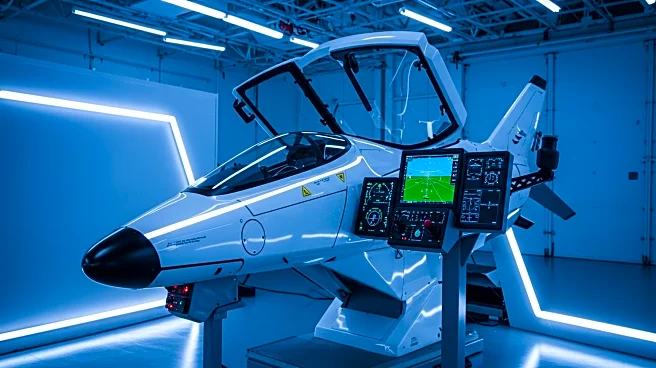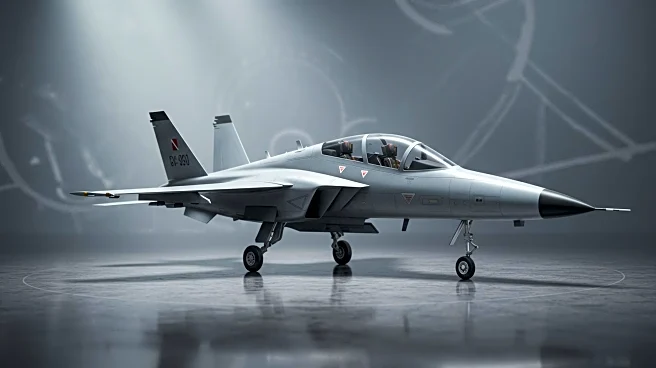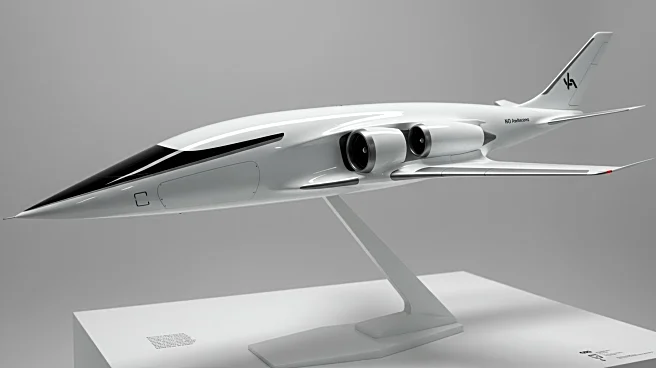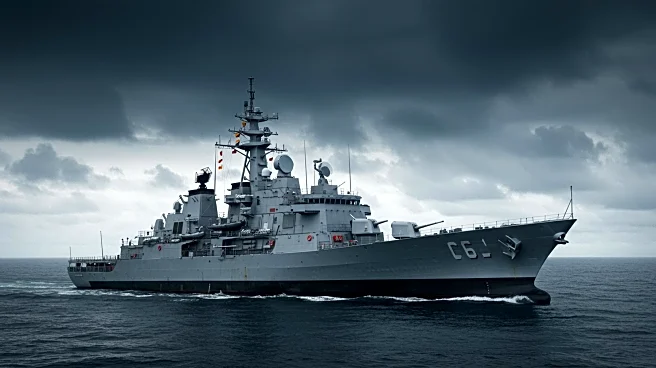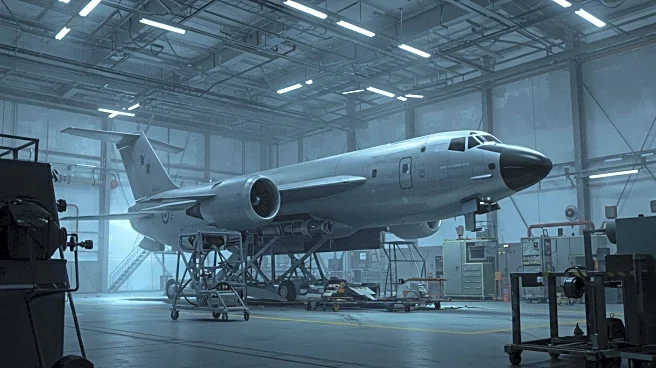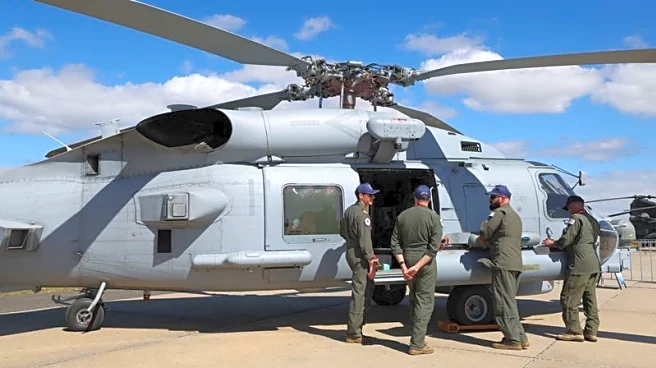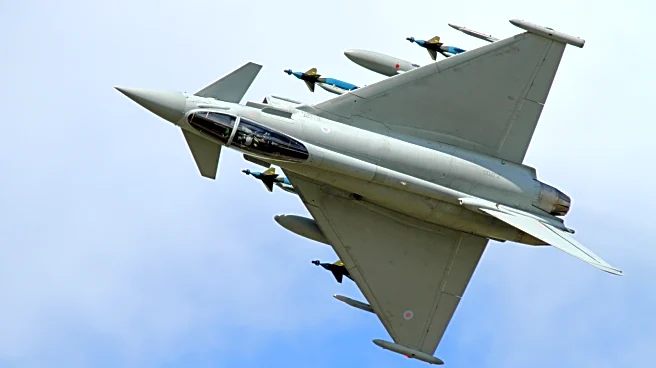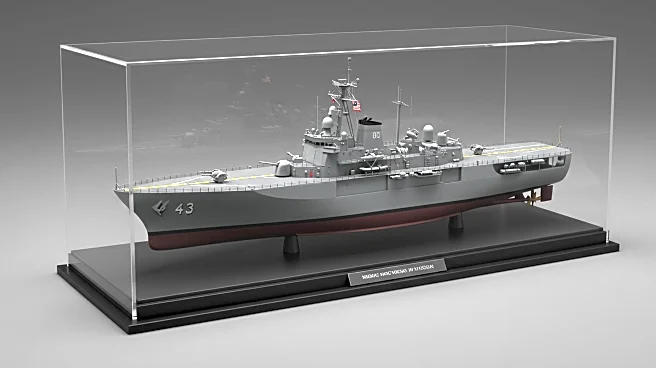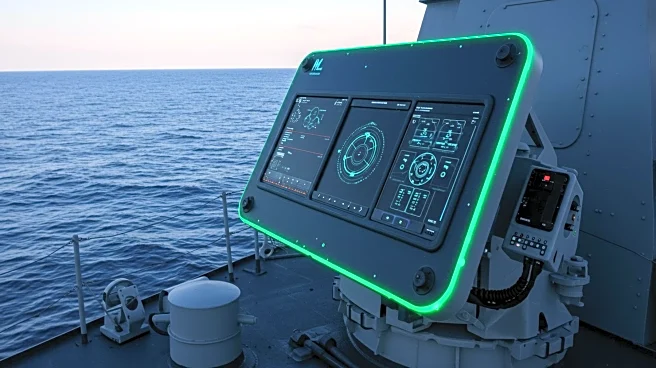What's Happening?
Sierra Nevada Corporation (SNC) has introduced the Freedom Trainer, a new aircraft designed for the US Navy's Undergraduate Jet Training System (UJTS) competition. This purpose-built, clean-sheet design aims to replace the aging Boeing T-45 trainers. SNC joins other competitors such as Boeing's T-7A, Textron's bid with the Leonardo M-346, and Lockheed Martin/Korea Aerospace Industries' T-50. The Freedom Trainer features a two-seat tandem cockpit with Martin-Baker Mk18 ejection seats and is powered by twin Williams International FJ44-4M turbofans. Despite the US Navy removing the requirement for field carrier landing practice (FCLP) to touchdown, SNC emphasizes its aircraft's capability to perform FCLP as an asset. The Freedom Trainer is rated for 16,000 flight hours and up to 35,000 carrier touch-and-go and FCLP landings, offering a 40% lower life cycle cost compared to the T-45.
Why It's Important?
The introduction of the Freedom Trainer by SNC adds a competitive edge to the US Navy's search for a new jet trainer, potentially influencing the future of naval aviation training. The ability to conduct FCLP, despite changes in requirements, positions SNC's offering as a comprehensive training solution. This development could impact the selection process, as the Navy seeks to balance cost-effectiveness with operational capabilities. The competition among major aerospace companies highlights the strategic importance of advanced training systems in maintaining military readiness and technological superiority.
What's Next?
The US Navy is expected to release a final solicitation for the UJTS by December 2025, with a contract award anticipated in January 2027. As the competition progresses, stakeholders will closely monitor the Navy's decision-making process, which will likely consider factors such as cost, performance, and future adaptability. The outcome of this competition could set a precedent for future military procurement strategies and influence the direction of naval aviation training.
